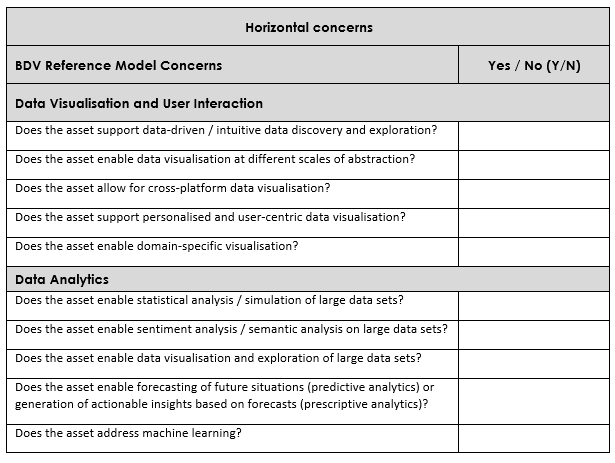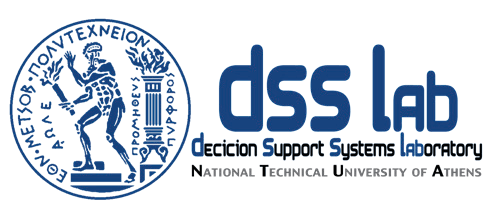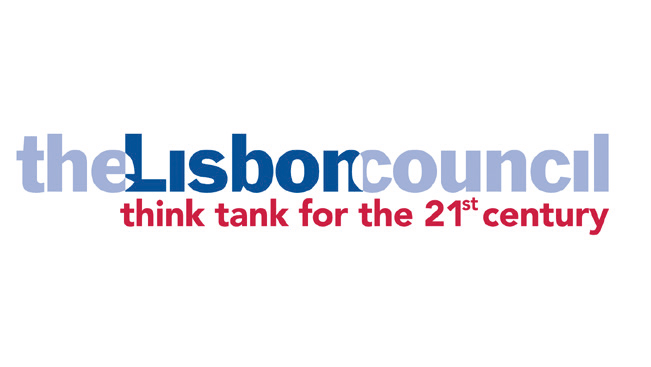How we assessed the big data potential of our needs, trends and assets
In order to find out what assets, needs and trends have a big data potential, we followed a two-step approach. First, we identified big data relevant assets based on the BDV (Big Data Value) Reference Model. These identified assets served as a basis to uncover big data relevant needs and trends in a second step since the BPC Knowledge Base is based on the triangulation of needs, trends and assets and accordingly shows their relations.
1. Assessment of big data relevant assets according to the BDV Reference Model
The model is structured along a horizontal and a vertical dimension. Horizontal concerns cover specific aspects along the data processing chain, starting with data collection and ingestion, and extending to data visualisation, whereas vertical concerns address cross-cutting issues (including non-technical aspects), which may affect all the horizontal ones such as Standards, Platforms for Data Sharing or Cybersecurity.
Find more information on the BDV Reference Model here.
We slightly adapted the BDV Reference Model using it as a checklist (see the following table) to evaluate the big data potential of all the assets in the Knowledge Base. An asset that fulfils at least one category within the Reference Model, is considered as big data relevant and is flagged as “Big Data Potential” in the Knowlegde Base.

2. Identification of big data relevant needs and trends
After having identified and flagged the assets with big data potential we could identify big data relevant needs and trends. Since the Knowledge Base shows the relation between needs, trends and assets and since every asset serves or addresses at least one public sector relevant trend or need, we could conclude from the interconnections which trends and needs are big data relevant.
At the beginning of 2019 the Top 3 needs that are served by the highest number of big data relevant assets were:
- Ensure availability of (real-time) information and knowledge
- Forward-looking strategic planning for the use of data and technologies as well as for practical implementation
- Deeper understand IT potential and IT processes
The Top 3 big data relevant trends have been:




